Israel is a relatively new nation that has several bordering countries, as well as the Palestinian territories. It is located in the Middle East with the Mediterranean Sea as its western border. A portion in the south also borders the Red Sea.
Officially independent in 1948, the history of the country that is now Israel has been quite complex and controversial. It is the site of many stories in religious texts including the Bible, the Quran, and the Torah. Various powers throughout the years have controlled the land in what is now Israel. Most recently, the Ottoman Empire ruled from the beginning of the 16th century until after World War I. The British took over and the whole region was known as Palestine, which included Transjordan (what is now Jordan).

After World War II and the Holocaust, the United Nations sought to create an independent state for Jewish and Arab people. Months of negotiation broke down in 1948 with a civil war between Palestinians and Israelis. On May 14, 1948, Britain terminated its mandate over the region and Israel declared independence. Ever since then, Palestinians and Israel have fought over several regions in the State of Israel, which include the West Bank and the Gaza Strip.
Let’s take a look at Israel’s bordering countries, as well as the Palestinian territories.
Egypt
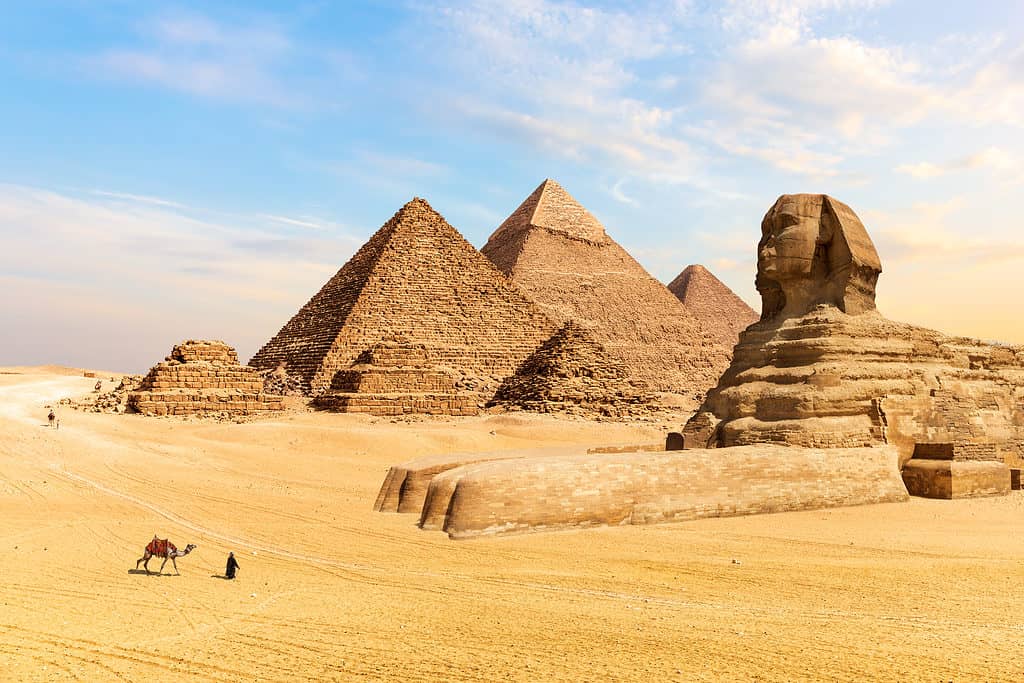
Ancient Egyptian rulers were known as pharaohs and its last pharaoh was Queen Cleopatra, who ruled from 51-30 BC.
©AlexAnton/Shutterstock.com
Egypt borders Israel on the north. The capital of Egypt is Cairo. Egypt’s climate is mostly desert and arid, but near rivers and the Mediterranean Sea, it can rain and civilization can be fruitful (although still very hot). The Nile River, the longest river in the world, flows through Egypt. The Giza pyramids, considered one of the seven wonders of the ancient world, are located in the country.
Egypt has a storied history that has been around for thousands of years. It has been part of another ruling entity for a long time until very recently. In 1882, the British invaded Egypt and took control of the country from the Ottoman Empire. The British wanted control of the Suez Canal in order to shorten cargo ship routes between Europe and Asia.
Egypt finally gained independence in 1952. During the 1970s, Egypt and Israel fought against one another in a series of wars that ended with the Camp David Accords in 1978.
Jordan
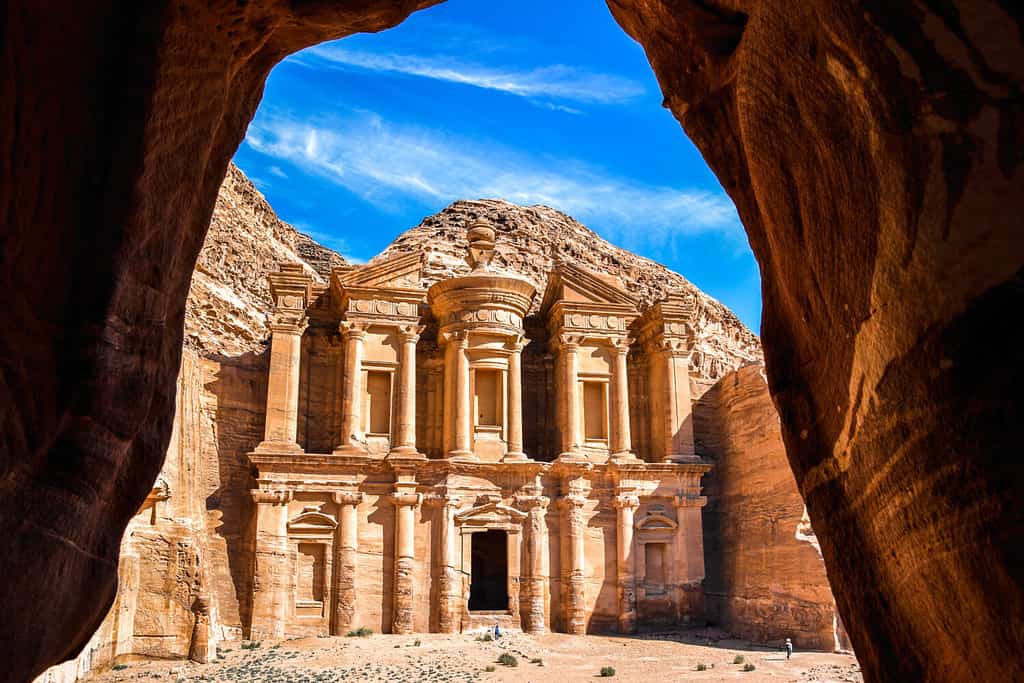
Although Jordan is a small country, it has more than 100,000 archeological sites.
©tenkl/Shutterstock.com
Jordan borders Israel on the east. Its full name is the Hashemite Kingdom of Jordan. The capital of Jordan is Amman. Jordan’s climate is mostly desert and Mediterranean, but it is very arid. The Jordan River (or River Jordan) runs through the country and flows into the Dead Sea.
The country has a rich ancient history where people have lived for more than 2,000 years. The site of Petra, which is one of the new seven wonders of the world, is in Jordan. Many have ruled the country, including Assyrians, Babylonians, Persians, and the Roman Empire. In the 1600s CE, Arab invaders brought Islam to the region.
In more modern history, the Ottoman Empire ruled for several hundred years. After World War I and the collapse of the Ottoman Empire, the British took over Jordan. In 1946, Jordan gained independence. Upon its independence, it has conflicted with Israel several times. Most recently, both countries have sought to establish peace with one another.
Lebanon
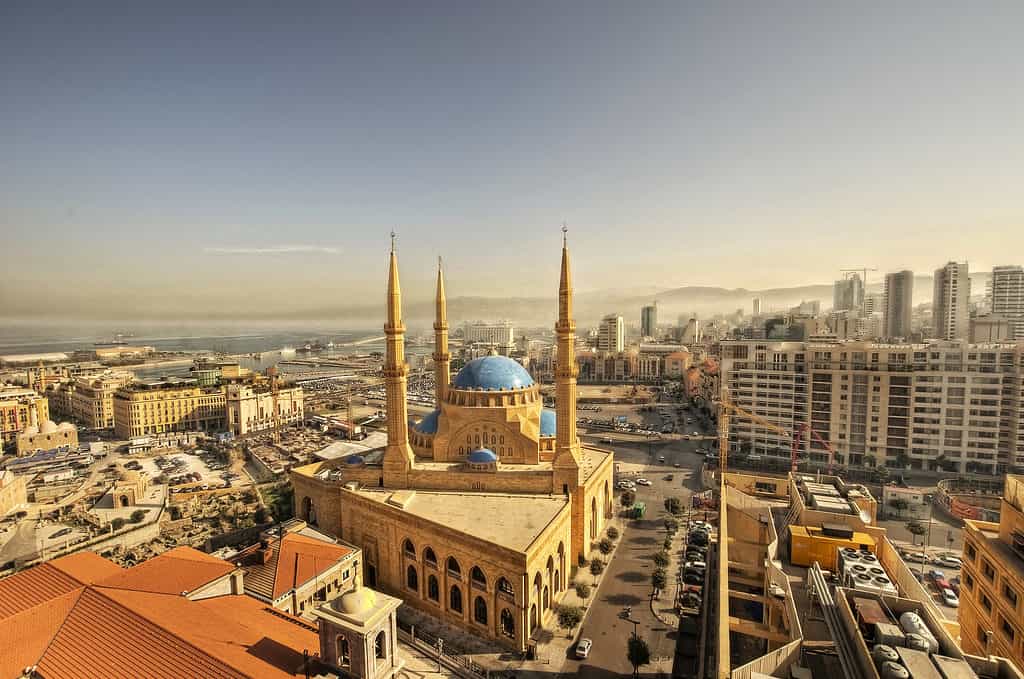
Beirut, Lebanon’s capital, is known as the “Paris of the East.”
©iStock.com/ramzihachicho
Lebanon borders Israel to the north. The capital of Lebanon is Beirut. Unlike other Middle Eastern countries, Lebanon has a Mediterranean climate with hot summers and wet winters. The country is known for its rich cultural heritage, ancient Roman ruins, beautiful mosques, and delicious cuisine.
Like its neighbors, the land in what is now Lebanon has been inhabited for thousands of years. The Phoenician Empire ruled present-day Lebanon for a thousand years until the Persians invaded. Afterward, the Romans and Arabs ruled Lebanon, but eventually, like Egypt and Jordan, the Ottoman Empire controlled the land.
After World War I and the dissolution of the Ottoman Empire, France seized control of Lebanon, but they gained independence in 1943. Like other Middle Eastern countries, they have been involved in conflicts with Israel since 1948. It is interesting to note that Israeli citizens or anyone with a stamp or visa issued by Israel on their passport are not allowed to enter Lebanon.
Syria

More than 60% of Syrians are jobless and about 70% are displaced. The majority of the country lives in poverty and is in need of humanitarian assistance.
©Fly_and_Dive/Shutterstock.com
Syria borders Israel to the northeast. The capital of Syria is Damascus, one of the oldest cities in the world. There has been continuous habitation in Syria for tens of thousands of years, making it one of the oldest countries in the world. Syria has a Mediterranean climate on the coast, but very dry inland. The summers can get quite hot.
Several empires ruled over Syria for thousands of years until the Ottoman Empire took over in the 16th century. As is common with other countries on this list, after World War I, France seized control of the country. It wasn’t until 1946 that Syria became an independent country. Syria also has had several conflicts with neighboring Israel and the two countries share a border that is in constant dispute.
Currently, Syria is in a civil war. Several forces are fighting against the government, headed by President (and dictator) Bashar al-Assad. Assad has ruled Syria in a completely totalitarian state. More than 14 million people have fled Syria, the largest refugee population in the world. This has prompted a response from other nations in Europe and elsewhere about the human rights violations in Syria. It has also created disagreement about what to do with refugees coming into their countries.
Palestinian Territories
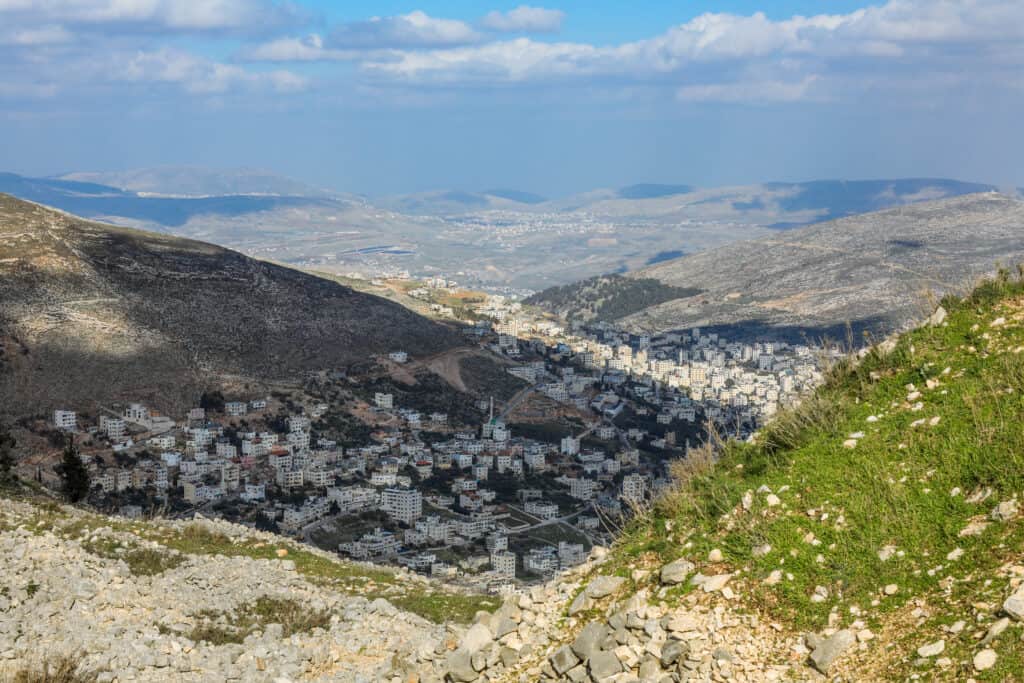
The Palestinians have their own flag with three colors — black, representing Palestine’s oppression and persecution; white, representing peace and love; and green, representing prosperity and hope.
©Dave Primov/Shutterstock.com
The Palestinian territories — the West Bank and Gaza Strip — are territories that are in dispute between Palestine and Israel. Both have claimed the territories and it is according to treaties that there is Palestinian authority over the territories. However, after the 1967 Arab-Israeli war, Israel claimed control of the territories. They remain under Israeli military occupation.
There has been constant conflict between Palestine and Israel since 1948 with no future date of its end. There is also current dispute and controversy as to whether Palestine should be recognized as an official state, with 138 nations out of 193 UN members recognizing Palestine. A total of 165 member nations recognize Israel.
Palestine has been in a struggle for a homeland for many years and because of that, there seems to be no end in sight to the conflict between Israel and Palestine.
Israel Facts
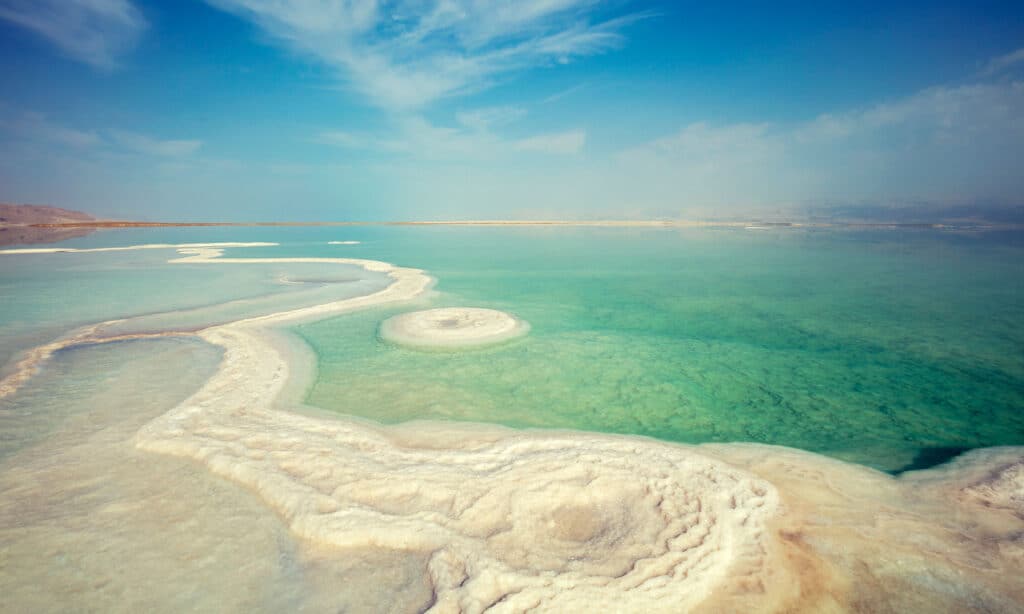
The Dead Sea, located between Israel and Jordan, is one of the saltiest lakes in the world because of its low elevation.
©iStock.com/vvvita
- Capital: Jerusalem
- Population: 9.3 million
- Currency: Shekel
- Official Languages: Hebrew and Arabic
- President: Isaac Herzog
- Prime Minister: Benjamin Netanyahu
Conclusion
The countries that border Israel include Lebanon, Egypt, Jordan, and Syria, as well as the Palestinian territories. Of course, there remains much controversy over these territories and we don’t know when this conflict will end.
Arab nations have conflicted with the State of Israel since its inception in 1948. Throughout the years, there have been efforts by several countries, including the United States, to bring peace to the region. Unfortunately, that has not succeeded and there is still much conflict, but there is hope that one day there will be peace.
Summary of the 4 Countries That Border Israel
| Number | Border Country | Bordered on |
|---|---|---|
| 1 | Egypt | North |
| 2 | Jordan | East |
| 3 | Lebanon | North |
| 4 | Syria | Northeast |
The photo featured at the top of this post is © iStock.com/rvbox
Thank you for reading! Have some feedback for us? Contact the AZ Animals editorial team.







